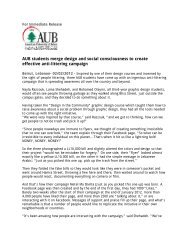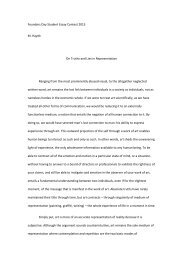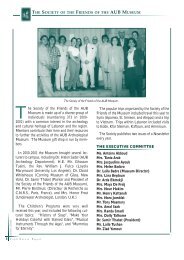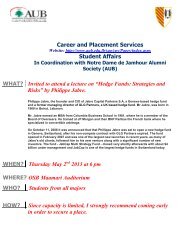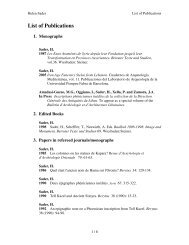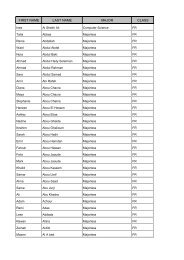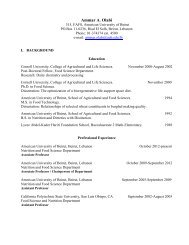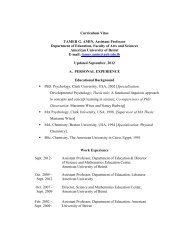The IX t h Makassed Medical Congress - American University of Beirut
The IX t h Makassed Medical Congress - American University of Beirut
The IX t h Makassed Medical Congress - American University of Beirut
You also want an ePaper? Increase the reach of your titles
YUMPU automatically turns print PDFs into web optimized ePapers that Google loves.
ELECTOPHYSIOLOGY IN HEART FAILURE<br />
Oussama Musbah Wazni, MD<br />
As more patients with heart failure are being diagnosed and treated it is becoming more evident<br />
that these patients invariably need to be treated by electrophysiologists.<br />
In addition for the need <strong>of</strong> device therapy such as ICDs and CRTDs these patients frequently<br />
develop VT or recurrent ICD shocks. This is usually first treated with antiarrhythmics medications<br />
but also not infrequently these patients need EPS and ablation.<br />
Also patients with heart failure increasingly develop atrial fibrillation with worsening functional<br />
status and also worsening left ventricular function again in this group <strong>of</strong> patients AF ablation has<br />
been shown to be effective.<br />
In this session we will discuss in more depth the role <strong>of</strong> electrophysiological studies and ablative<br />
therapy in patients with heart failure.<br />
SURGICAL VENTRICULAR RESTORATION (SVR)<br />
THE EARLY EXPERIENCE IN SAUDI ARABIA<br />
Walid Abukhudair; E. Ahmed; A. Ajam; W. Ahmed;<br />
K. Shaibi; M. El-Hamami; A. Ashmeg<br />
Objectives: To evaluate our early experience with SVR as therapy for a subset <strong>of</strong> patients with<br />
ischemic cardiomyopathy.<br />
Background: Ischemic cardiomyopathy poses a challenging problem to the cardiologist and<br />
cardiac surgeons. Following myocardial infraction, 20% <strong>of</strong> patients develop ventricular dilation<br />
and congestive heart failure (CHF) even with early reperfusion therapy. This is due to “ventricular<br />
remodeling” process that results in the loss <strong>of</strong> the normal elliptical shape <strong>of</strong> the ventricle and CHF.<br />
Ventricular volume reduction, and shape restoration surgery has recently become an available<br />
option for this subset <strong>of</strong> patients. We prospectively examined the early outcome <strong>of</strong> SVR in our<br />
institution.<br />
Methods: Eight prospective post anterior myocardial infraction patients underwent SVR with<br />
concomitant CABG /or mitral valve repair are presented.<br />
We also reviewed the stich trial result in a critical EBM method.<br />
Results: 110 SVR patient were done between March 2006 to March 2010.<strong>The</strong> mean age was 50.6<br />
(+ 5.1) years. All patients were males. <strong>The</strong> mean left ventricular fraction was 20 % ± 3.16. One<br />
hundred patient had SVR with concomitant CABG. Thirty five patients had mitral valve repair as<br />
well. <strong>The</strong> average number <strong>of</strong> grafts was 2 + 0.63. <strong>The</strong> NYHA class has improved from 3.3 (+ 0.8) to<br />
1.8 + 0.4. <strong>The</strong> mean left ventricular ejection fraction improved from 20 + 3.16 to 30.8 + 5.8.<br />
<strong>The</strong> post-op ventilation period was 40 hours (+ 1.9) and the mean length <strong>of</strong> stay was 12.8 (+ 4.7)<br />
days. Intra aortic balloon pump (IABP) and Levosimendan were used in 40 patients. <strong>The</strong>re is one<br />
intra operative mortality and mortality rate was 5 %. STICH did not select same patient population<br />
and did not treat them the write way in terms <strong>of</strong> technique and LV reduction.<br />
79





